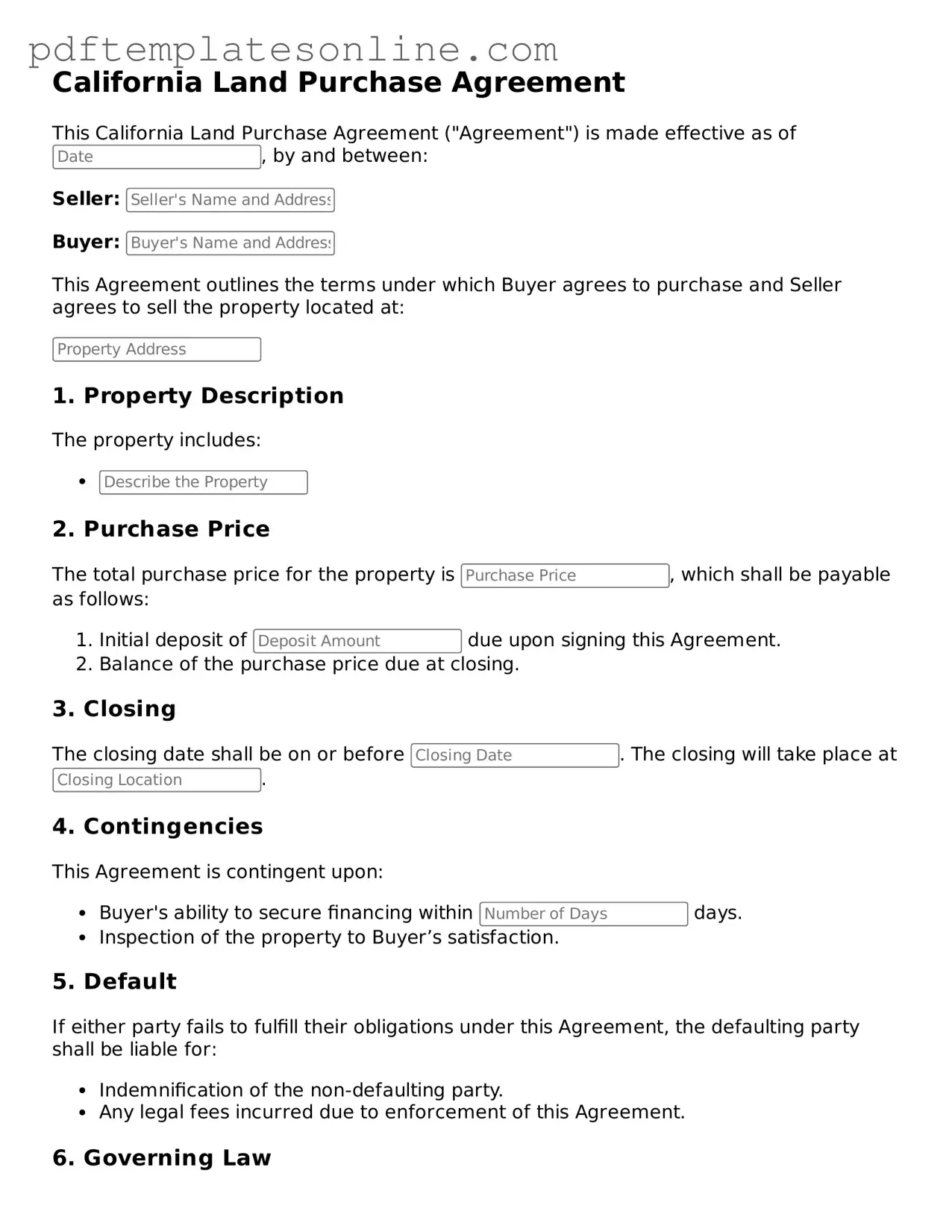Filling out the California Land Purchase Agreement form can be a daunting task. Many people make mistakes that can lead to complications down the line. Understanding these common pitfalls can help ensure a smoother transaction.
One frequent mistake is failing to provide accurate property descriptions. It's essential to include the correct address and legal description of the property. Omitting or misrepresenting this information can lead to disputes later.
Another common error is not specifying the purchase price clearly. Both parties must agree on the amount, and this should be clearly stated in the agreement. Ambiguities can create confusion and potential legal issues.
Many individuals overlook the importance of including contingencies. These are conditions that must be met for the sale to proceed. Without them, buyers may find themselves locked into an agreement without the ability to back out if certain conditions are not satisfied.
Additionally, failing to include earnest money can be problematic. This deposit shows the buyer's commitment to the purchase. Not specifying the amount or the terms of the deposit can raise questions about the seriousness of the offer.
Another mistake is neglecting to outline the closing date. This date is crucial for both parties to plan accordingly. Without a specified timeline, delays can occur, leading to frustration and potential financial loss.
Many people also forget to address who is responsible for closing costs. This can lead to misunderstandings and disputes. Clearly stating who will pay these costs in the agreement can prevent issues later.
Some individuals fail to sign the document correctly. All required parties must sign the agreement for it to be valid. Missing signatures can invalidate the contract, leaving both parties unprotected.
Not reviewing the document thoroughly before submission is another common mistake. It's vital to check for errors or omissions. A careful review can save time and prevent legal complications in the future.
Lastly, many overlook the importance of legal advice. Consulting with a professional can provide clarity and ensure that all aspects of the agreement are properly addressed. Taking this step can help protect your interests and facilitate a successful transaction.
